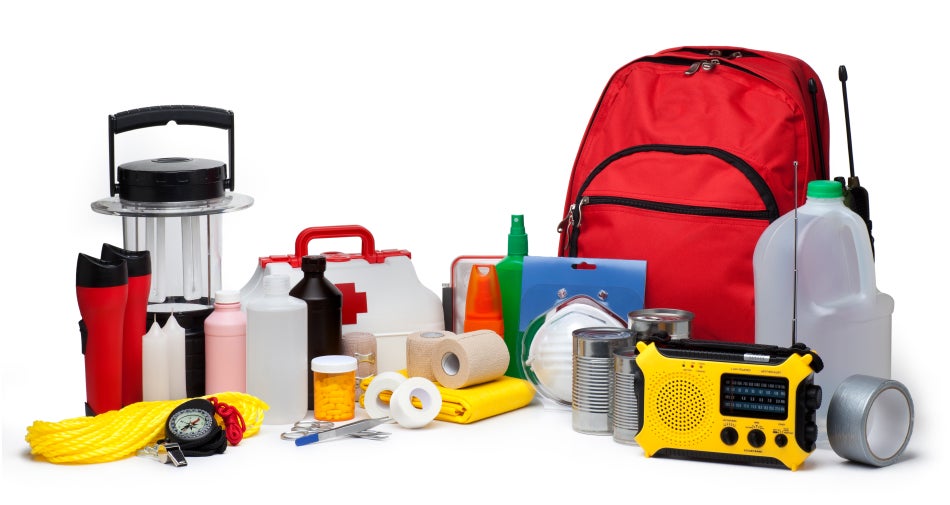Stay Safe with Emergency Preparedness: Professional Tips and Methods
Stay Safe with Emergency Preparedness: Professional Tips and Methods
Blog Article
Exactly How to Develop a Comprehensive Emergency Situation Readiness Plan
In the realm of readiness, establishing an extensive emergency strategy is not simply a task to examine off a listing; it is a vital foundation of any company or individual's resilience strategy. By diligently crafting a plan that deals with numerous aspects of emergency monitoring, including threat evaluation, interaction protocols, source allotment, and strategic decision-making, one can lay a strong structure for securing operations, possessions, and lives.
Importance of Emergency Situation Readiness
Emergency preparedness is crucial for minimizing potential dangers and ensuring the safety and security of neighborhoods and people. In today's world, where natural catastrophes, public wellness crises, and various other emergency situations can strike without warning, being prepared can make a considerable distinction in minimizing the effect of these occasions. By having a well-balanced emergency situation preparedness plan in location, individuals and organizations can respond successfully, protect lives, and decrease residential or commercial property damage.
Among the key factors why emergency situation readiness is crucial is its role in conserving lives. Having a plan that outlines clear procedures for evacuation, interaction, and emergency action can aid individuals act promptly and emphatically when emergencies occur (More about the author). This can prevent injuries and casualties by ensuring that people recognize what steps to require to remain secure
Furthermore, emergency preparedness enhances the durability of areas. By promoting a society of readiness and planning for different circumstances, communities can recuperate quicker from calamities and disruptions. This strength is important for preserving security, connection of procedures, and overall well-being when faced with misfortune.
Assessing Possible Threats
Considering the significance of being gotten ready for unpredicted occasions, the initial action in developing an efficient emergency preparedness plan includes completely assessing and assessing potential risks. This evaluation requires an extensive evaluation of all possible risks that could affect the organization, thinking about elements such as location, industry, and historic information on occurrences. By identifying these threats, companies can prioritize their preparedness efforts and allocate sources successfully to minimize one of the most considerable hazards.
Typical risks that organizations may encounter consist of all-natural catastrophes like cyclones, floods, or quakes, technical dangers such as power interruptions or data violations, as well as human-caused threats like mishaps or deliberate acts of physical violence. Conducting a danger analysis likewise involves considering the possible impact of these occasions on the organization's operations, workers, customers, and reputation. By performing a detailed danger assessment, companies can develop customized emergency action plans that resolve their specific susceptabilities and guarantee reliable preparedness for any kind of prospective situation.
Producing a Communication Strategy
Creating a thorough and clear communication strategy is important for effective emergency situation preparedness within organizations. In times of situation, communication plays an essential role in making sure the safety and well-being of workers, stakeholders, and the area. A well-thought-out communication strategy need to describe clear lines of communication, mark vital personnel responsible for communication tasks, and develop procedures for disseminating information quickly and precisely.
One secret facet of developing a communication plan is determining main and alternative communication channels (EMERGENCY PREPAREDNESS). These can include e-mail, text messaging, phone trees, social media platforms, and public address systems. It is vital to make certain that these channels are dependable, easily accessible, and regularly tested to guarantee their effectiveness during emergencies

Structure an Emergency Set
Provided the critical significance of readiness in times of dilemma, a key part that organizations have to attend to is the establishment of an emergency package. When setting up an emergency set, it is important to consider the certain needs and scenarios of the organization. In addition, organizations must consist of essential records, such as contact listings, insurance policy info, and emergency situation response plans, in water-proof containers within the kit.
Establishing Discharge Treatments
To make sure the safety and security and organized evacuation of workers throughout emergency situations, organizations should develop clear and reliable emptying treatments. Discharge treatments should encompass a variety of prospective circumstances, consisting of fires, all-natural catastrophes, or other emergency situations that need swift discharge.

Additionally, organizations need to establish a system for accountancy for all employees during an emptying to make certain that everyone has securely left the premises. Communication plays a crucial duty in evacuation treatments, with clear guidelines on just how to leave and when to do so. Routine testimonial and updating of emptying procedures based upon responses and transforming circumstances are necessary to keeping the performance of the plan.
Conclusion
Finally, establishing a detailed emergency situation readiness strategy is crucial for guaranteeing the security and wellness of individuals in case of a catastrophe (EMERGENCY PREPAREDNESS). By evaluating prospective dangers, producing a communication plan, building an emergency kit, and developing emptying people, companies and procedures can be better equipped to react properly to emergency situations. It is very important to focus on preparedness efforts to minimize the influence of catastrophes and safeguard lives and residential property
In the world of preparedness, developing a comprehensive emergency situation strategy is not merely a job to examine off a listing; it is an important cornerstone of any kind of organization or individual's strength technique. When emergency situations happen, having a plan that lays out clear treatments for emptying, communication, and emergency situation feedback can help individuals act swiftly and emphatically. you could check here. By conducting a complete threat assessment, organizations can establish customized emergency situation action strategies that resolve their details susceptabilities and ensure effective preparedness for any kind of possible situation
Creating a clear and comprehensive communication strategy is crucial for effective emergency readiness within organizations. By analyzing possible threats, developing an interaction plan, developing an emergency kit, and establishing discharge companies, procedures and individuals can be better equipped to react properly to emergency situations.
Report this page